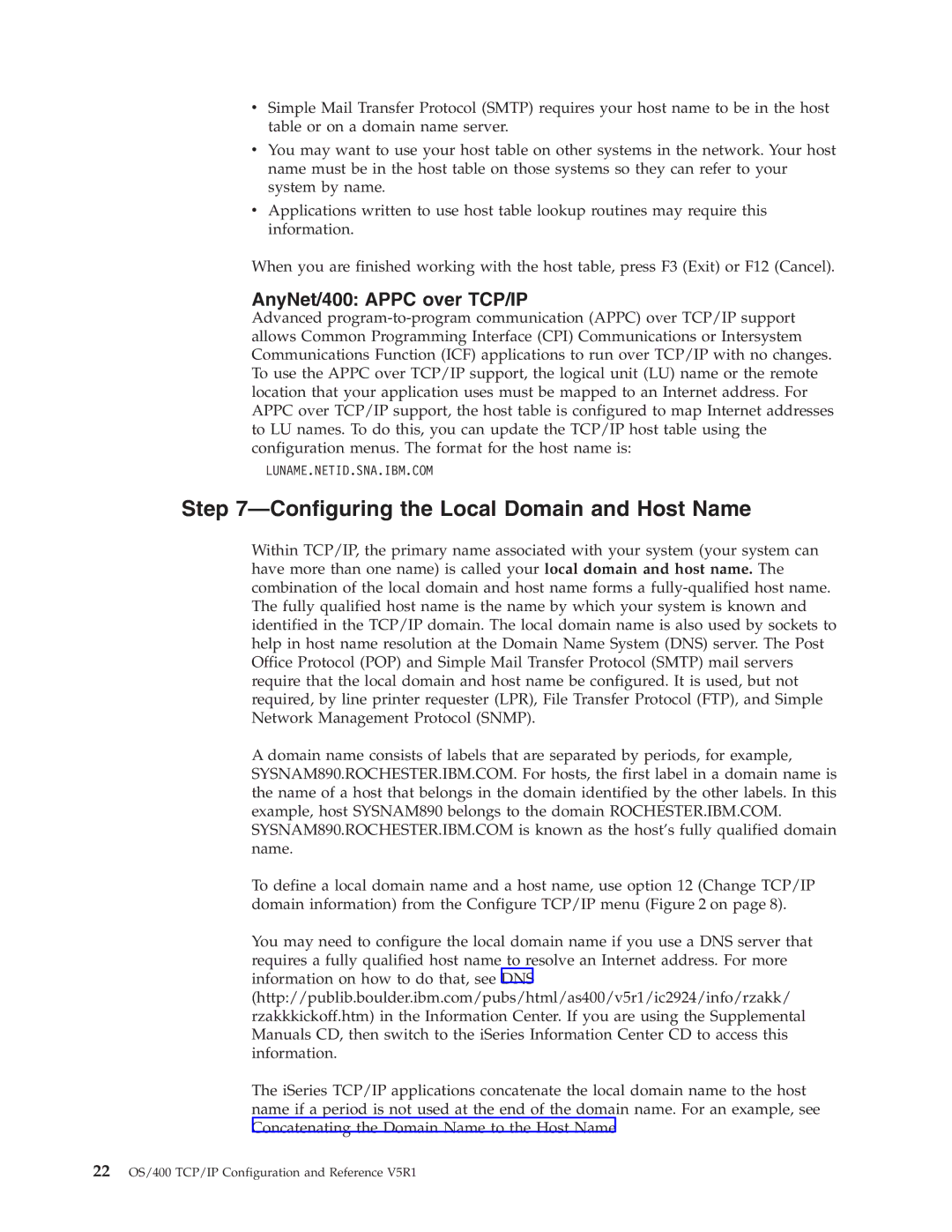vSimple Mail Transfer Protocol (SMTP) requires your host name to be in the host table or on a domain name server.
vYou may want to use your host table on other systems in the network. Your host name must be in the host table on those systems so they can refer to your system by name.
vApplications written to use host table lookup routines may require this information.
When you are finished working with the host table, press F3 (Exit) or F12 (Cancel).
AnyNet/400: APPC over TCP/IP
Advanced
LUNAME.NETID.SNA.IBM.COM
Step 7—Configuring the Local Domain and Host Name
Within TCP/IP, the primary name associated with your system (your system can have more than one name) is called your local domain and host name. The combination of the local domain and host name forms a
A domain name consists of labels that are separated by periods, for example, SYSNAM890.ROCHESTER.IBM.COM. For hosts, the first label in a domain name is the name of a host that belongs in the domain identified by the other labels. In this example, host SYSNAM890 belongs to the domain ROCHESTER.IBM.COM. SYSNAM890.ROCHESTER.IBM.COM is known as the host’s fully qualified domain name.
To define a local domain name and a host name, use option 12 (Change TCP/IP domain information) from the Configure TCP/IP menu (Figure 2 on page 8).
You may need to configure the local domain name if you use a DNS server that requires a fully qualified host name to resolve an Internet address. For more information on how to do that, see DNS (http://publib.boulder.ibm.com/pubs/html/as400/v5r1/ic2924/info/rzakk/ rzakkkickoff.htm) in the Information Center. If you are using the Supplemental Manuals CD, then switch to the iSeries Information Center CD to access this information.
The iSeries TCP/IP applications concatenate the local domain name to the host name if a period is not used at the end of the domain name. For an example, see Concatenating the Domain Name to the Host Name
22OS/400 TCP/IP Configuration and Reference V5R1
